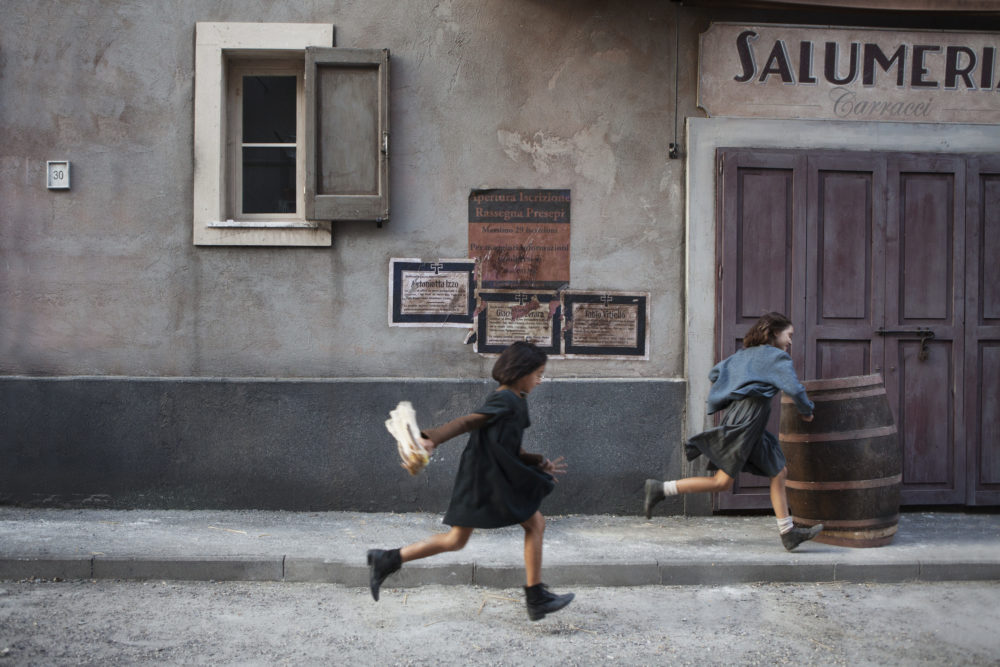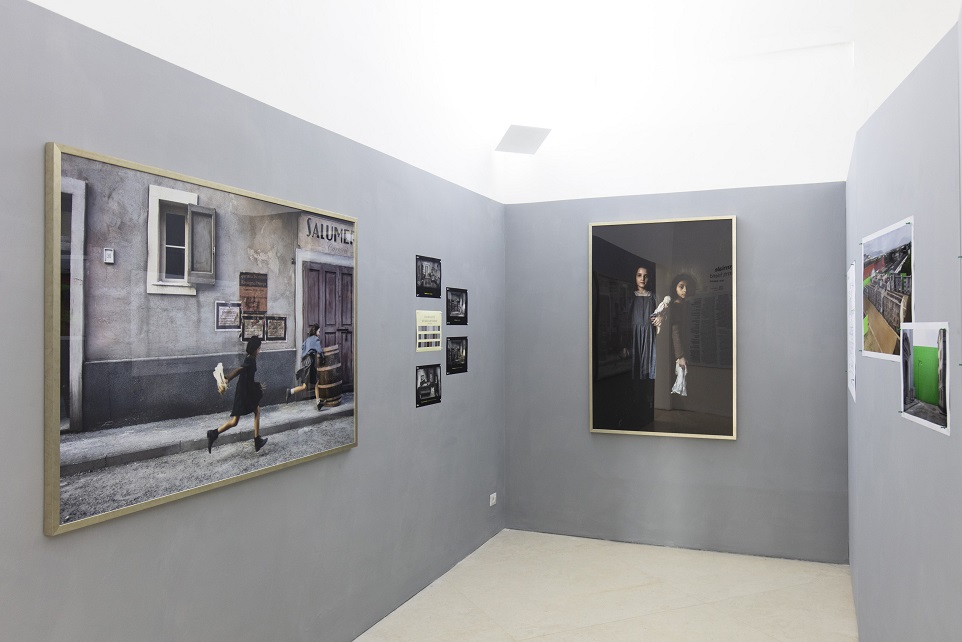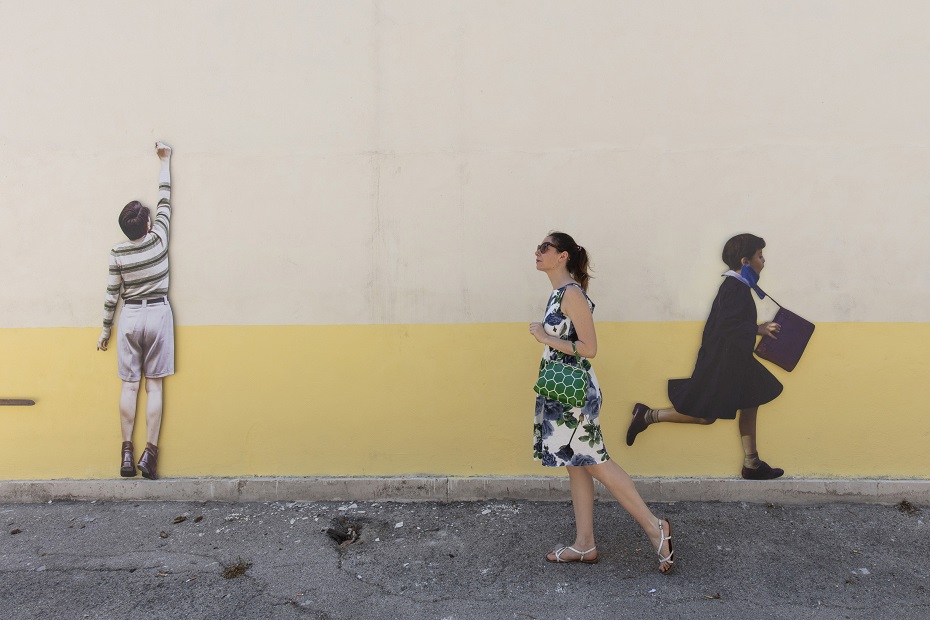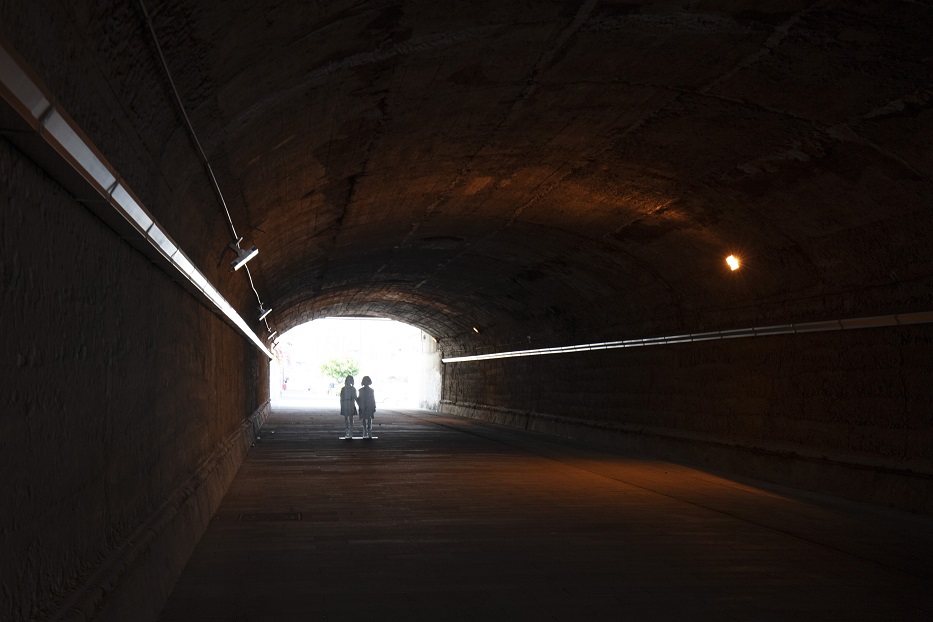«I sat down at my desk. […] We’ll see who wins this time, I said to myself. I turned on the computer and began to write all the details of our story, everything that still remained in my memory.»
This is the opening of both the tetralogy of My Brilliant Friend, written by Elena Ferrante and of the television series directed by Saverio Costanzo: thus, opening a window of vision on the narration of Elena Greco, known as Lenù, and Raffaella Cerullo, also called Lila. A story of friendship and conflict, of affinity and rivalry, of growth and life. A literary and visual story staged by the Film Commission Regione Campania and the Fondazione Donnaregina per le arti contemporanee through a selection of production stills by Eduardo Castaldo (Naples, 1977), taken on the set of the television series, day after day, scene after scene, capturing, through his own lenses, the enigma of the opposite destinies of the protagonists. Instances, moments, plots, situations, which recall the written word and concurrently show the real-time work of cinema, giving back to us, through his views, the narrative fascination of the novel. My Brilliant Friend. Views from the Set is an exhibition project in several sections and in several places: at the Madre museum outskirts of the city of Naples. Each “chapter” of the exhibition is conceived of as a single episode within a wider expository plot in which to immerse oneself and let oneself be carried through the unfolding pattern.
At the Madre museum, the spaces of the Mezzanine introduce us to the existential universe of the novel and its representation in the television series, by presenting, as in a family album, the protagonists, the characters and their families. The exhibition continues in the Columns Gallery where it is divided into four interconnected sections, each dedicated to a different theme: the episodes and the main scenes; the specificity of the film production work; the power of acting and the extraordinary beauty of Naples and of the multiple places of the Campania territory that served as filming locations.
At the Luzzatti district, the Giulio Andreoli Library hosts a focus on the universe of childhood and the education of the protagonists. It is a sort of additional location – compared to the more well-known Piazza del Plebiscito and Spaccanapoli – which aims to attract the visitor, leading him/her to explore the neighborhood and its streets, to cross the real places where, in the course of reading, he/she has imagined Lila and Lenù meeting, becoming friends and growing up. Thanks to a public art intervention specially designed by Castaldo, the visitor will be accompanied through the tunnel of the escape towards the sea, invited to sit in the small square, to recognize the grills, windows, doors, gates, alleys and corners of a story read, imagined, staged, and however never experienced until now. Reinvoking the same compositional method – that is to say the form of a story within a story of the original novel, which begins with the words spoken by Lenù to recall Lila from her disappearance – the exhibition is composed by overlapping layouts, widening the borders of the exhibition path: “blurring the boundaries” of the very definition of display to widen and extend itself to life.
By referring to the cliff-hanger dynamics typical of a television saga and of a serial novel, also the exhibition project is constructed through the anticipation of a narrative sequel that, as in the 19th century pushed the reader of the feuilleton to buy the next issue and nowadays nails the spectator to the television screen, leads the museum visitors to ask for more to see, more to know and beyond…















